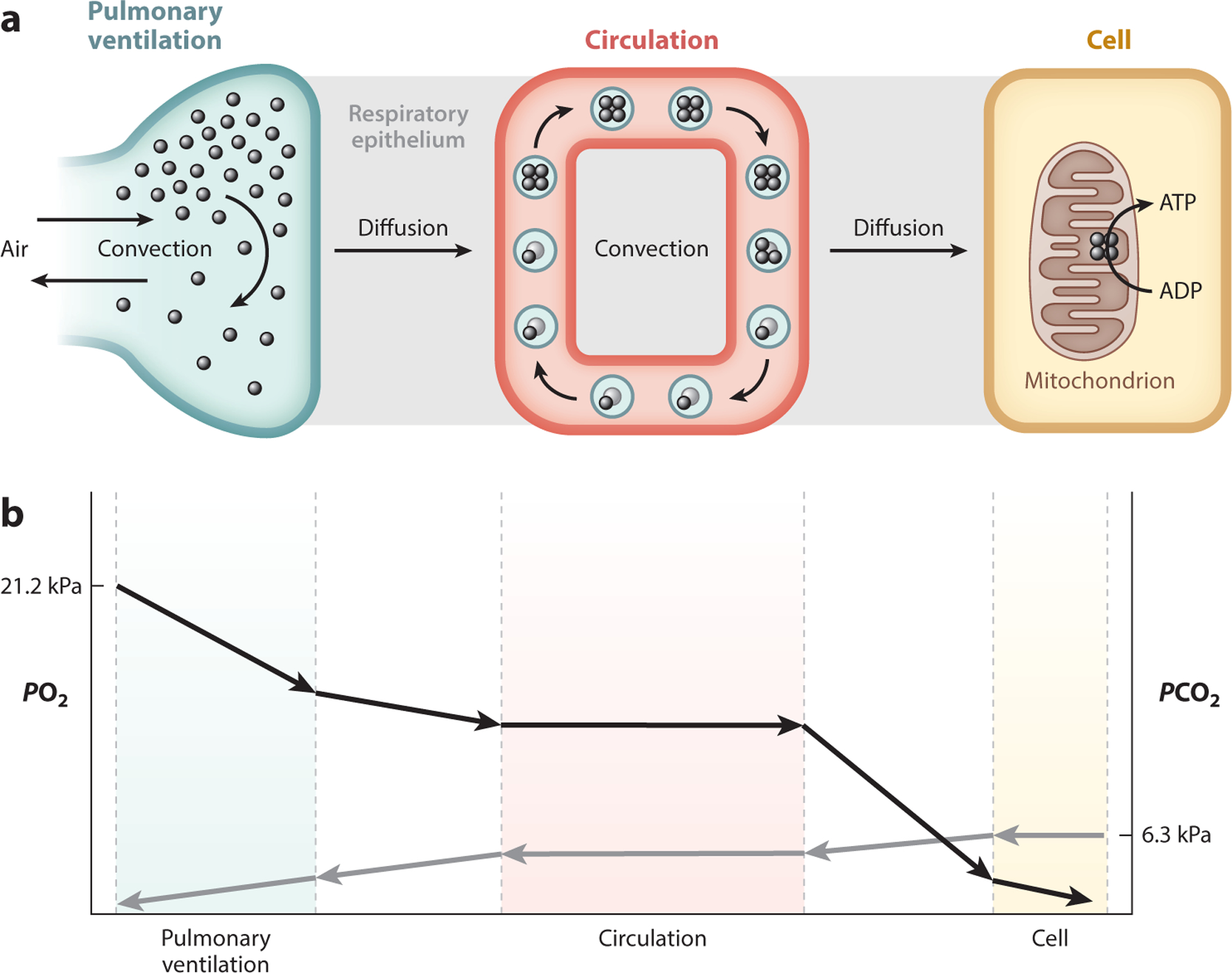Figure 2.

The O2 and CO2 transport cascades. (a) Diagrammatic representation of compartments of gas transport in the mammalian cardiorespiratory system. O2 is transported from atmospheric air to the tissue mitochondria along a pathway with several diffusive and convective steps: pulmonary ventilation, pulmonary O2 diffusion, circulatory O2 delivery, tissue O2 diffusion, and mitochondrial O2 utilization. Hb is schematically depicted as a tetrameric (four-subunit) protein that reversibly binds up to four O2 molecules. (b) Diffusive O2 flux is driven by gradients in PO2, resulting in declines in PO2 from one compartment to the next. Blood PO2 declines from the afferent (arterial) inlet of the tissue capillary bed to the efferent (venous) outlet as Hb unloads O2 to the perfused tissue. PO2 also declines with distance from the capillaries, so a gradient of cellular PO2 should reflect variation in capillary PO2 and diffusion distance. An equivalent multistep pathway exists for the transport of CO2 in the reverse direction. Abbreviations: ADP, adenosine diphosphate; ATP, adenosine triphosphate; Hb, hemoglobin; PO2, partial pressure of O2.
